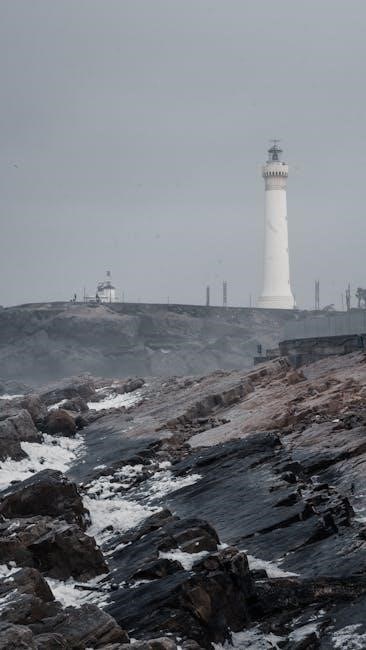pocket guide to public speaking
Public speaking, a vital skill, isn’t solely for the naturally gifted. Researchers suggest anyone can improve through practice and preparation, enhancing presentations and confidence.
Effective communication involves knowing your audience, organizing thoughts, and delivering a compelling message—skills honed with dedication and focused effort.
From classrooms to conferences, mastering public speaking unlocks opportunities, allowing you to share ideas, inspire others, and achieve professional growth.
Why Public Speaking Matters
Public speaking transcends mere presentation; it’s a cornerstone of leadership, influence, and career advancement. The ability to articulate ideas clearly and persuasively is invaluable in nearly every profession, fostering collaboration and driving innovation.
Conferences and symposia offer platforms to disseminate research and engage with peers, yet fear often hinders participation. Overcoming this fear unlocks opportunities for professional visibility and impact.
Effective communication builds trust, strengthens relationships, and facilitates understanding. Whether presenting to a classroom, a boardroom, or a large audience, your voice matters.
Mastering public speaking empowers you to advocate for your ideas, inspire action, and connect with others on a deeper level. It’s a skill that enhances not only your professional life but also your personal growth, fostering confidence and self-expression. Don’t underestimate the power of a well-delivered message!
Ultimately, it’s about sharing your unique perspective and contributing meaningfully to the world around you.
Overcoming the Fear of Public Speaking
Glossophobia, the fear of public speaking, is remarkably common, affecting individuals across all walks of life; Recognizing that nervousness is normal is the first step towards managing it. It’s a physiological response, not a sign of inadequacy.
Preparation is paramount. Thoroughly researching your topic and practicing your speech builds confidence and reduces anxiety. Writing out your speech, and then practicing it repeatedly, can be incredibly beneficial.
Impromptu speeches are excellent exercises for building quick-thinking skills and reducing reliance on rigid scripts. Start small, with less formal presentations, gradually increasing the stakes.
Focus on your message and your audience, rather than your own anxieties. Remember why you’re speaking and the value you bring. Visualize success and embrace the opportunity to connect with others.
Be yourself, and remember that authenticity resonates with audiences. A genuine connection is far more impactful than a flawless performance.

Preparation is Key
Success in public speaking hinges on diligent preparation. Understanding your audience, crafting a clear message, and structuring your speech are essential components.
Effective organization ensures a compelling and memorable presentation, maximizing impact and audience engagement through thoughtful planning.
Prioritize thoroughness; a well-prepared speech builds confidence and minimizes anxiety, leading to a more polished delivery.
Understanding Your Audience
Knowing your audience is paramount to effective public speaking. Before crafting your speech, dedicate time to analyze who you’ll be addressing. Consider their existing knowledge level on the topic – avoid jargon if they are newcomers, and delve deeper if they are experts.
Demographics matter. Age, cultural background, and professional affiliations all influence how your message is received. Tailor your examples and language to resonate with their experiences. What are their expectations? Are they there to be informed, entertained, or persuaded?

Anticipate their perspectives and potential concerns. Addressing these proactively demonstrates respect and builds trust. A speech that connects with the audience on a personal level is far more impactful than one delivered in isolation. Think about what they want to hear, not just what you want to say.
Research can be invaluable. If possible, gather information about previous events or presentations to gauge audience preferences. Understanding their needs allows you to craft a message that truly resonates, fostering a meaningful connection and maximizing your speech’s effectiveness.
Defining Your Message
Clearly defining your message is the cornerstone of a successful speech. What single, overarching idea do you want your audience to take away? This core message should guide every aspect of your presentation, from the introduction to the conclusion.
Boil it down to a concise statement – a “thesis” for your speech. This ensures focus and prevents rambling. Everything you say should support and reinforce this central theme. Avoid trying to cover too much ground; depth is often more impactful than breadth.
Consider your purpose: are you informing, persuading, or entertaining? Your message should align with this objective. A persuasive speech requires a clear call to action, while an informative speech prioritizes clarity and accuracy.
Refine your message through outlining. Ensure each point directly contributes to the central theme. A well-defined message not only enhances clarity for your audience but also provides you with a strong foundation for confident delivery.
Structuring Your Speech
A well-structured speech enhances clarity and audience engagement. Think of it as a journey for your listeners – it needs a clear beginning, middle, and end. A classic structure involves an introduction, body, and conclusion.
The introduction should grab attention, state your message, and preview your main points. The body develops these points with supporting evidence and examples. Finally, the conclusion summarizes your key takeaways and leaves a lasting impression.
Organize your body paragraphs logically – chronologically, spatially, or by importance. Use transitions to smoothly connect ideas and guide the audience through your argument. Signposting (“first,” “second,” “finally”) can also be helpful.
Remember the power of outlining. A detailed outline ensures a coherent flow and prevents you from losing track of your train of thought. A strong structure builds confidence and maximizes impact.
Your introduction is crucial; it sets the tone and captures your audience’s attention immediately. Start strong – a relevant anecdote, a surprising statistic, or a thought-provoking question can work wonders. Avoid rambling or apologizing for nervousness.
Clearly state your topic and its relevance to the audience. Explain why they should care about what you’re about to say. A strong thesis statement provides focus and direction. Preview your main points, giving listeners a roadmap of your speech.
Keep it concise – aim for a brief but impactful introduction. Don’t reveal all your information upfront; leave some mystery to pique their interest. Practice your opening lines until they feel natural and confident.
A well-crafted introduction builds credibility and establishes a connection with your audience, setting the stage for a successful presentation. Start strong, and you’re halfway there!
Developing Strong Body Paragraphs
Body paragraphs form the core of your speech, supporting your thesis with evidence and detail; Each paragraph should focus on a single main point, clearly stated in a topic sentence. Develop this point with supporting facts, statistics, examples, or anecdotes.
Ensure logical flow between paragraphs, using transitions to guide your audience. Words like “however,” “therefore,” and “in addition” create coherence. Avoid jumping between ideas without connection.
Keep it concise and focused; avoid unnecessary jargon or tangents. Relate your points back to the audience’s interests and needs. Visual aids can enhance understanding, but don’t let them overshadow your message.
Strong body paragraphs demonstrate your knowledge and build a persuasive argument. Structure them logically, support your claims, and keep your audience engaged. Clarity and relevance are key!
Crafting a Memorable Conclusion
A strong conclusion doesn’t simply summarize; it resonates. Reiterate your main message, but do so with fresh language and impact. Avoid merely repeating your introduction – elevate it.
Consider a call to action, inspiring your audience to think, feel, or do something. This could be a challenge, a question, or a suggestion for further exploration. Leave them with a lasting impression.
End with a powerful statement – a quote, a story, or a thought-provoking idea. This final element should tie everything together and reinforce your central theme. Avoid introducing new information.
Practice your conclusion as diligently as the rest of your speech. A confident and compelling ending solidifies your message and leaves a positive, memorable experience for your audience.

Delivery Techniques
Effective delivery hinges on vocal projection, pace, and engaging body language. Utilize visual aids strategically to enhance, not distract, from your core message.
Confidence stems from practice; maintain eye contact and modulate your tone for maximum impact and audience connection.
Vocal Projection and Pace
Vocal projection is paramount; ensure everyone in the room can comfortably hear you without straining. This doesn’t necessarily mean shouting, but rather utilizing diaphragmatic breathing to support your voice and amplify its reach. Practice speaking from your core, not just your throat, to avoid fatigue.
Pace is equally crucial. Speaking too quickly can overwhelm your audience, while a sluggish pace risks losing their attention. Vary your speed to emphasize key points and create a more dynamic delivery. Strategic pauses are powerful tools – they allow the audience to absorb information and create anticipation.
Record yourself practicing to identify areas for improvement. Pay attention to monotone delivery; inject enthusiasm and vary your inflection. A natural, conversational tone is often more engaging than a rigidly formal one. Remember, your voice is a powerful instrument; learn to wield it effectively to captivate and connect with your listeners.
Nonverbal Communication: Body Language
Body language significantly impacts your message, often conveying more than words themselves. Maintain eye contact with various individuals throughout the audience – this fosters connection and demonstrates confidence. Avoid staring fixedly at one spot or reading directly from notes.
Posture is key. Stand tall with your shoulders relaxed, avoiding slouching or fidgeting. Use natural hand gestures to emphasize points, but refrain from excessive movements that can distract. Be mindful of your facial expressions; they should align with the tone of your speech.
Movement can be effective, but purposeful. Avoid pacing aimlessly. Use steps to transition between ideas or to engage different sections of the audience. Mirroring your audience’s body language subtly can build rapport. Remember, authentic and congruent nonverbal cues enhance credibility and engagement.
Using Visual Aids Effectively
Visual aids, when used correctly, amplify your message and enhance audience understanding. Keep slides concise, employing minimal text and impactful imagery. Avoid overwhelming the audience with excessive information on a single slide; less is often more.
Charts and graphs should be clear, labeled, and easy to interpret. Ensure they directly support your spoken points, rather than simply repeating them. High-quality images and videos can add visual interest, but ensure they are relevant and contribute to the overall message.
Practice integrating visual aids seamlessly into your presentation. Don’t read directly from the slides; use them as prompts and visual reinforcement. Maintain eye contact with the audience, not the screen. Ensure visibility for everyone in the room, and always have a backup plan in case of technical difficulties.

Practice and Refinement
Rehearsal builds confidence and fluency. Seek constructive feedback from trusted sources. Acknowledge and manage nervousness through preparation and deep breathing techniques for a polished delivery.
Rehearsing Your Speech
Effective rehearsal transcends simply reading your speech aloud. It’s about internalizing the material, becoming comfortable with the flow, and anticipating potential stumbling blocks. Begin by practicing in a quiet space, focusing on clarity and pacing. Gradually introduce distractions – standing, moving around, and even simulating an audience – to build adaptability.
Time yourself during rehearsals to ensure your speech fits within the allotted timeframe. Don’t be afraid to record yourself; reviewing the recording can reveal areas for improvement in your delivery, such as filler words or awkward pauses.

Practice with visual aids, integrating them seamlessly into your presentation. Remember, rehearsal isn’t about memorizing every word, but about knowing your key points and being able to articulate them naturally. The goal is to feel prepared, not robotic. Consistent practice transforms nervousness into confidence, allowing you to connect with your audience authentically.
Seeking Feedback
Constructive criticism is invaluable for refining your public speaking skills. Share your speech with trusted friends, colleagues, or mentors and specifically request honest feedback. Ask them to evaluate not only the content but also your delivery – pace, body language, and vocal projection.

Don’t just ask “How was it?” Instead, pose targeted questions: “Was the message clear?”, “Did the introduction grab your attention?”, or “Were there any points that felt confusing?”. Be open to hearing things you may not want to hear; feedback is meant to help you grow.

Consider joining a public speaking group, like Toastmasters, where you can practice in a supportive environment and receive regular evaluations. Remember to actively listen to the feedback, take notes, and identify patterns in the suggestions. Implement the advice that resonates with you and aligns with your goals, transforming critique into improvement.
Handling Nervousness During the Speech
Nervousness is perfectly normal, even for experienced speakers! Acknowledge it, don’t fight it. Deep, controlled breathing exercises before and during your speech can significantly calm your nerves. Focus on your breath to center yourself and slow your heart rate.
Visualize success. Imagine yourself delivering a confident and engaging speech. This mental rehearsal can boost your self-assurance. Remember your opening lines thoroughly; a strong start builds momentum.
If you stumble, don’t dwell on it. Pause, take a breath, and continue. The audience is often more forgiving than you think. Channel your nervous energy into enthusiasm. Focus on connecting with your audience and delivering your message, rather than fixating on your anxiety. Remember preparation builds confidence, and practice makes progress!

Engaging Your Audience
Storytelling and appropriate humor captivate listeners, making your message memorable. Connect emotionally, fostering a rapport that keeps the audience invested in your presentation.
Relatable anecdotes and lighthearted moments enhance understanding and create a more enjoyable experience for everyone involved.
Storytelling Techniques
Harnessing the power of narrative is crucial for audience engagement. Stories aren’t merely entertainment; they’re powerful tools for illustrating points, evoking emotion, and making complex ideas relatable. A well-crafted story creates a connection, transforming passive listeners into active participants.
Begin with a compelling opening that immediately grabs attention; Develop characters and a clear plot, even in brief anecdotes. Focus on sensory details – what did things look, sound, smell, taste, or feel like? This immerses the audience in the experience.
Personal stories often resonate deeply, showcasing vulnerability and authenticity. However, ensure they directly support your message and aren’t simply digressions. Structure your stories with a clear beginning, rising action, climax, and resolution.
Don’t be afraid to use pauses for dramatic effect. Vary your vocal tone and pace to emphasize key moments. Remember, the goal isn’t just to tell a story, but to show it, allowing the audience to experience it alongside you. A captivating narrative transforms a presentation from informative to unforgettable.
Using Humor Appropriately
Integrating humor can significantly enhance a presentation, fostering rapport and making your message more memorable. However, it requires careful consideration and a keen understanding of your audience and the context.
Self-deprecating humor is often a safe and effective choice, demonstrating humility and relatability. Avoid jokes that are offensive, controversial, or rely on stereotypes. Ensure your humor aligns with your overall message and doesn’t detract from your credibility.
Timing is crucial. A well-placed anecdote or witty observation can break the tension and re-engage the audience. Don’t force humor; if it doesn’t feel natural, it’s best to omit it.
Observe audience reactions. If a joke falls flat, gracefully move on. A genuine smile and a lighthearted tone are often more effective than a contrived attempt at humor. Remember, the goal is to connect with your audience, not to become a comedian. Subtlety and relevance are key to successful comedic integration.

Q&A Session Mastery
Anticipate questions, preparing thoughtful responses to potential challenges. Listen carefully, repeat the question for clarity, and answer concisely, maintaining composure and confidence.
Handle difficult inquiries with grace, acknowledging concerns and offering well-reasoned explanations, turning challenges into opportunities for further engagement.
Anticipating Potential Questions
Proactive preparation is crucial for a successful Q&A session. Before your presentation, brainstorm potential questions your audience might pose. Consider their background, interests, and possible areas of concern related to your topic. Think critically about potential challenges to your arguments or data presented.
Develop concise and informative answers to these anticipated questions. Don’t just rehearse the answers verbatim; understand the underlying concepts so you can adapt your responses to different phrasing. Categorize questions – factual, opinion-based, challenging – and prepare accordingly.
Consider “what if” scenarios. What if someone asks about a limitation of your research? What if they challenge your conclusions? Having thought through these possibilities beforehand will reduce anxiety and allow you to respond thoughtfully. IESE Business School suggests preparing for tough questions is key. Remember, anticipating questions demonstrates respect for your audience and strengthens your credibility.
Don’t be afraid to admit you don’t know the answer. It’s better to be honest than to fabricate information. Offer to follow up with a more detailed response later.
Responding to Difficult Questions
Difficult questions are inevitable. Remain calm and composed; avoid defensiveness. Acknowledge the questioner’s point, even if you disagree. Begin your response by restating the question to ensure understanding and to buy yourself a moment to formulate a thoughtful answer.
Address the core of the question directly and honestly. If the question is based on a misunderstanding, politely clarify the facts. If it’s a legitimate challenge, acknowledge the validity of the concern and explain your reasoning.
Don’t be afraid to say “I don’t know,” but offer to find the answer and follow up. Avoid rambling or evasive responses. Keep your answers concise and focused. IESE Business School emphasizes handling questions effectively builds trust.
If faced with a hostile question, maintain professionalism. Respond respectfully, focusing on the issue, not the person. Redirect the conversation if necessary, and don’t get drawn into an argument. Remember, your goal is to inform and engage, not to win a debate.






























